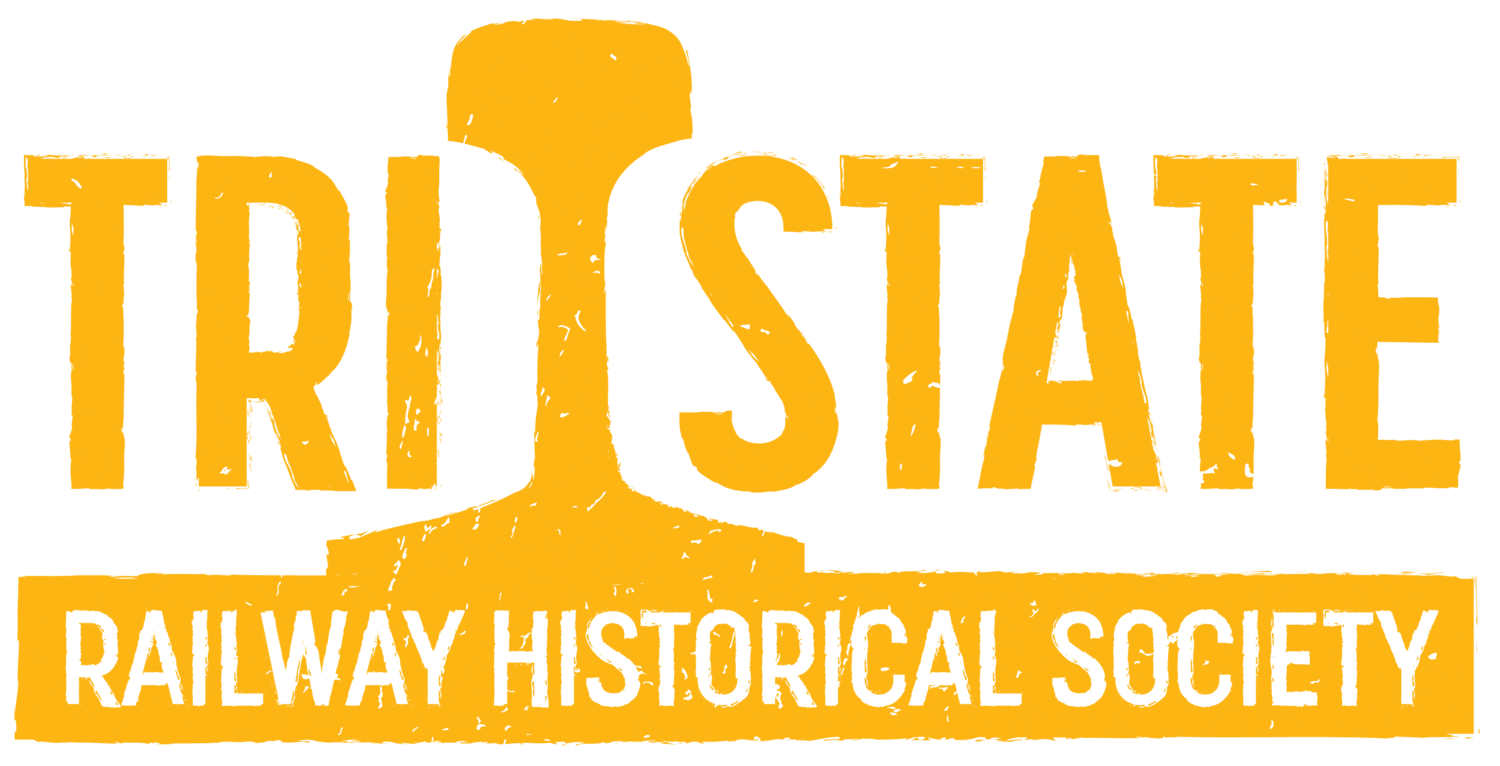ERIE Caboose #C330
Caboose No. C330 is a bay window-type caboose built by the Erie Railroad. Today, it survives in the Tri-State collection as an example of the most significant design change to the classic railroad caboose since the advent of the cupola in 1863.
Construction & Design
Like most major railroads in the middle of the 20th century, the Erie Railroad had a large fleet of several dozen wooden cabooses. At the end of World War II, with steel more readily available, the railroad decided to design and build its own steel “Dunmore” cabooses. These cars maintained the classic caboose look, but were unique due to their in-house design and construction at the Erie’s shop in Dunmore, Pennsylvania.
For decades, traditional cabooses (such as the "Dunmore" cars) had a cupola on top, which served as a perch where the conductor could view their train. As freight cars developed, especially through the 1940s, they became taller, and eventually it became impossible to see the length of a train from the cupola. This created the need for the bay window design. Rather than a projection out of the roof, bay window cabooses had projections out of either side of the car body. From a seat in the middle of the caboose, conductors could see their whole train because their view extended wider than the width of the train’s freight cars.
The Erie’s prototype bay window caboose, like the earlier “Dunmore” cars, was shop-built in Dunmore, PA in 1952. The new No. C300 toured around the whole Erie system as the railroad took input and suggestions from the crew members who used it. In 1953, the Erie took their revised design to be mass-produced by the International Car Company in Kenton, Ohio, rather than in the Erie's own Dunmore shops. With some additional design changes and standardizations made by International Car, fifty more cabooses were ordered and dispersed across the system.
No. C330 Service History
Tri-State is the latest of many owners of this caboose. No. C330 served in road freight service on the Erie from 1953 to 1960. It survived in service through the 1960 Erie Lackawanna merger and continued to become part of Conrail in 1976. Conrail renumbered the car to No. 21141, painted it blue, and classified it as a type N7D caboose.
In the 1980s, when cabooses were phased out nation-wide, Conrail sold off or scrapped hundreds of their own. C330 survived the carnage and was sold to the Everett Railroad, a freight and tourist railroad in south central Pennsylvania, which began to restore the car to its original Erie appearance.
No. C330 was later purchased by the Black River & Western in New Jersey. When volunteer Mark Krisanda heard they had acquired an authentic Erie caboose, he decided he had to have it for himself. Mark purchased the caboose as a project to share with his father. Together they painted it back into Erie colors, and the caboose was used on Black River’s excursion trains.
As the need for No. C330 on the Black River & Western waned, Mark decided it was time to pass it on to a new owner, and donated it to the Tri-State Railway Historical Society. It left the BR&W on July 11, 2014, traveled across several original Erie Lackawanna lines to the Morristown & Erie Railway's yard in Whippany, NJ.
In 2015, Erie No. C330 was moved to storage at the the United Railroad Historical Society of New Jersey's restoration facility in Boonton, NJ. There, a new team of volunteers has taken on the restoration of the caboose.
Restoration
Tri-State intends to restore Erie No. C330 to its as-built appearance. Several defining features that have been lost to time (end ladders, radio antenna, etc.) will be restored.
While C330 does not look to be in poor shape, it has been heavily modified over its career, and weathering has damaged some exterior metal. Volunteers plan to restore the caboose not just to as-built appearance, but to as-built quality. Tasks include:
Metal work & body repair
Full historically-accurate exterior repaint
Replacement of ladders, roof walks, handrails, and wagon wheel antenna
Full interior repaint
Restoration of original floorplan
Replacement of natural wood floor
1953 builder's photo of sister caboose No. C301. (International Car Company photo)
Paint diagram for cabooses Nos. C301-C350. (Paul Tupaczewski collection)
1952 interior photo of prototype caboose No. C300. (Erie Railroad photo)
Floor plan of Erie's bay window cabooses while in service on the Erie Lackawanna. (Bob Bahrs collection)
No. C330 in road train service on the Erie Lackawanna in the early 1960s, still wearing its original Erie colors. (Paul Tupaczewski collection)
No. C330 was assigned to the Marion, OH area under Erie Lackawanna, where it is seen in this April of 1972 photo. It has been repainted into its first EL paint scheme. (Lynn Roberts photo)
Between 1972 and 1973, No. C330 was repainted again into to the Erie Lackawanna's maroon and grey scheme. The No. C330 is seen here passing the Marion, OH tower in 1973. (Gene Dent photo)
Just after the Conrail merger, this August 1976 view finds No. C330 in Suffern, NY, still in its Erie Lackawanna paint job. (Rudy Garbely collection)
This July 26, 1979 diagram shows the Conrail N7D class of cabooses, of which Erie No. C330 (Conrail No. 21141) was a member. (Collection of The Conrail Historical Society - www.TheCRHS.org)
Erie No. C330 has become Conrail No. 21141, and is in service in Springfield, OH in September of 1986. (Jim Hebner photo)
May 12, 2016 photo of No. C330 as it begins its restoration at Boonton Yard. (Kevin Phalon photo)
PLEASE DONATE HERE!
Your gracious contributions will get No. C330 restored. Any amount helps, big or small!
Please note that all PayPal donations are subject to PayPal fees. For every dollar you donate, Tri-State receives roughly $0.96. As an alternative, Tri-State accepts donations by check or other means. Please click here for more information.

